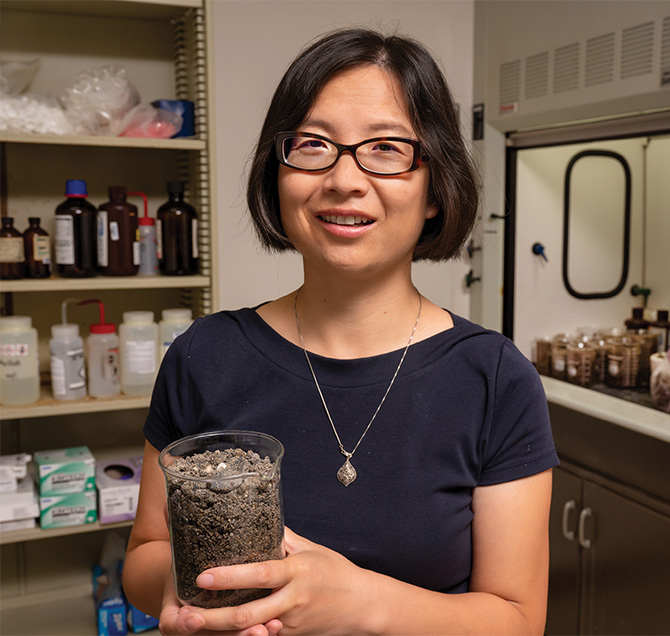Majie Fan, associate professor of earth and environmental sciences, was born on the Loess Plateau in northern China, a dry highland named for its loose, finegrained, yellowish topsoil. As a young girl living in a rural province, she spent much of her time playing in the dirt that defined her home.
Today, the time Dr. Fan spends with loess—a sediment formed by the accumulation of wind-blown dust—is academic. Through a National Science Foundation grant, she and her collaborator at the University of Connecticut are investigating the nature, causes, and climate importance of loess’ appearance in the western United States.
“We know that the region was under ocean water about 80 million years ago,” Fan says. “How could loess, which is transported by wind and signals a very dry climate, form there?”
She said her motivation for the project is to understand the sudden, regional climate change that caused continental aridification to accumulate loess. Discovering the reason for the rapid shift could inform geologists’ forecasting of subsequent environmental changes.
“We don’t know what will happen in the future, but we can always learn from the past,” Fan says. “Using that knowledge, we can better predict how the climate will change in the future.”



